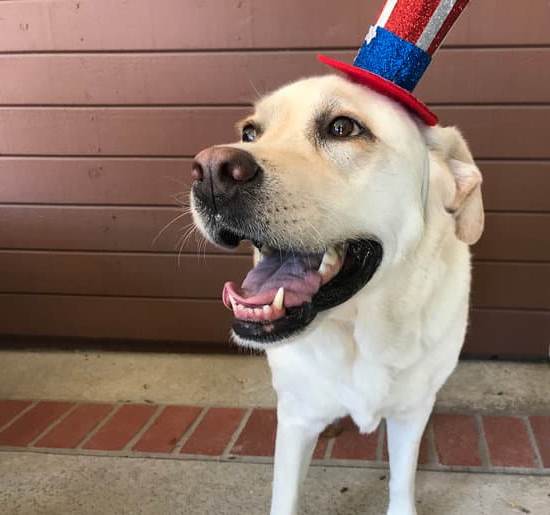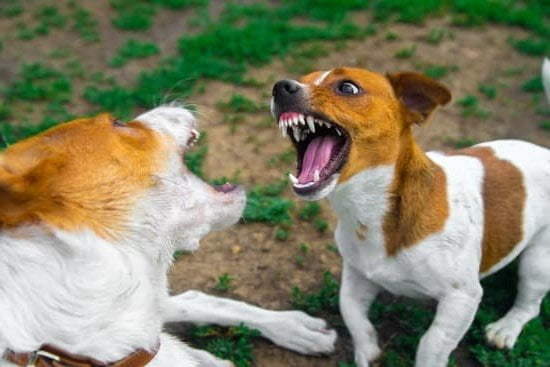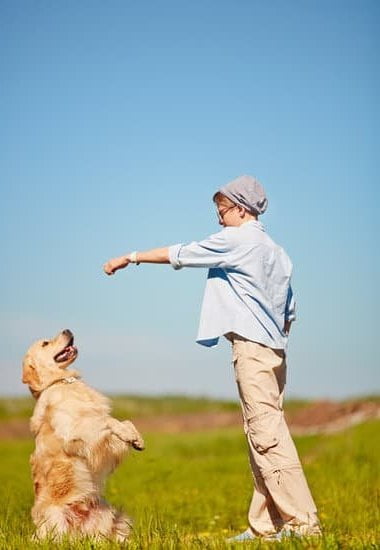Potty training a second dog may seem like a daunting task, but with the right techniques and consistency, it can be a smooth process. Whether you’re bringing home a new puppy or adopting an adult dog, it’s important to understand the unique challenges and strategies for potty training a second dog in a household. In this article, we will explore the key steps and considerations for successfully potty training your second furry friend.
One of the most crucial aspects of potty training a second dog is consistency. Just like with the first dog, establishing a routine and sticking to it is essential for effectively teaching your new pup where to do their business. Additionally, understanding the importance of patience and positive reinforcement can make all the difference in creating a successful potty training experience for both you and your second dog.
Setting up a designated potty area for your second dog is another important step in the potty training process. This helps create a clear understanding for your pup of where they should go to relieve themselves. By providing them with a specific location to do their business, you can minimize accidents inside the house and streamline the training process.
Understanding the Importance of Consistency in Training
When it comes to potty training a second dog, consistency is key to success. Just like with any type of training, consistency plays a crucial role in ensuring that your second dog understands and follows the potty training rules. Without consistent training, your efforts to potty train your second dog can become confusing and ineffective.
Consistent Schedule
One of the most important aspects of consistency in potty training a second dog is to establish a consistent schedule for potty breaks. This means taking your second dog out at the same times every day, such as first thing in the morning, after meals, and before bedtime. By sticking to a routine, you are helping your dog understand when it’s time to go outside and do their business.
Consistent Commands
Using consistent commands when potty training your second dog is also essential. Whether it’s “go potty” or another phrase, using the same command every time you take your dog outside will help them associate the phrase with the action of going to the bathroom. Consistency in this aspect will help reinforce the behavior you want from your second dog.
Consistent Reinforcement
Consistently reinforcing good behavior is another crucial aspect of potty training a second dog. This includes praising and rewarding your dog each time they go potty outside. By consistently providing positive reinforcement, you are helping your second dog understand what is expected of them and reinforcing their good behavior.
Setting Up a Designated Potty Area for Your Second Dog
When it comes to potty training a second dog, setting up a designated potty area is crucial for success. This not only helps in keeping your home clean but also provides a clear and consistent signal to your new dog about where they should go potty.
To effectively set up a designated potty area for your second dog, consider the following steps:
1. Choose an appropriate outdoor space: Select an outdoor area that is easily accessible to your second dog. This could be a corner of your yard or a specific patch of grass.
2. Use scent markers: Encourage your new dog to use the designated potty area by using scent markers. Consider placing some of their waste in the area to establish the scent, which will signal to them that this is an appropriate place to go.
3. Consistent use of the designated area: Whenever you take your second dog outside for potty breaks, consistently lead them to the designated area. Over time, they will come to recognize this spot as their bathroom.
In addition to these steps, it’s important to regularly clean and maintain the designated potty area to ensure it remains an appealing spot for your second dog to do their business.
By following these guidelines for setting up a designated potty area, you can effectively teach your second dog where they should go potty and simplify the training process.
Utilizing the Help of the First Dog in Training
Potty training a second dog can be a daunting task, but it becomes easier when you utilize the help of your first dog. Here are some ways you can use your first dog to assist in the potty training process:
1. Role modeling: Dogs learn from observing other dogs, so having your first dog demonstrate appropriate potty behavior can be highly beneficial for your second dog. When your first dog goes outside to potty, bring your second dog along to observe and learn.
2. Encouragement: Your first dog can also provide encouragement and motivation for your second dog. When your first dog successfully goes potty outside, praise and reward both dogs to reinforce the positive behavior.
3. Supervised outings: Take both dogs outside at the same time for potty breaks. This allows your second dog to see that going potty outside is a normal part of the routine and provides an opportunity for them to mimic the behavior of the first dog.
In addition to utilizing the help of your first dog in training, it’s important to continue reinforcing positive behavior with praise and rewards as well as setting up a designated potty area and establishing a routine for potty breaks. By being consistent and patient, you can successfully potty train a second dog effectively.
Remember that every dog is different, and it may take time for your second dog to fully grasp the concept of potty training. Stay committed to the process and seek professional guidance if you encounter any persistent challenges. With dedication, patience, and the guidance of your first dog, you can achieve success in potty training your second furry companion.
Establishing a Routine for Potty Breaks
Potty training a second dog requires establishing a routine for potty breaks just as it did when you trained your first dog. Consistency is key in reinforcing good potty habits, so it’s essential to have scheduled potty breaks for your second dog. When establishing a routine, consider factors such as the dog’s age, breed, and individual needs.
It’s important to note that puppies have limited bladder control and will need to go outside more frequently than adult dogs. A good rule of thumb is to take your second dog out every 1-2 hours. As they grow older and learn to hold their bladder, you can gradually increase the time between potty breaks.
In addition to regular intervals throughout the day, pay attention to cues from your second dog that indicate they need to go outside. This could include pacing, sniffing around, or circling in one spot. By being attuned to your dog’s behavior, you can anticipate when they need a bathroom break and prevent accidents indoors.
| Establishing a Routine for Potty Breaks | Data |
|---|---|
| Consistency is key | Regular intervals for potty breaks |
| Pay attention to cues from your dog | Avoid accidents by being attuned to your dog’s behavior |
Positive Reinforcement and Reward System
When potty training a second dog, positive reinforcement and a reward system are essential tools in the training process. Dogs respond well to positive reinforcement, and it can make the training experience more enjoyable for both you and your furry friend. When your second dog successfully goes potty in the designated area, be sure to immediately praise them and offer a small, tasty treat.
Consistency is key when implementing a reward system. Make sure to consistently reward your second dog every time they successfully go potty in the right spot. This will help reinforce the behavior and encourage them to continue using the designated area.
In addition to using treats as rewards, you can also incorporate verbal praise and affection as part of the positive reinforcement. Dogs thrive on attention from their owners, so offering verbal praise along with a treat can be highly effective in encouraging good potty habits.
| Positive Reinforcement Methods | Benefits |
|---|---|
| Treats and verbal praise | Reinforces desired behavior, encourages continued use of designated potty area |
| Consistent rewards | Helps establish routine and consistent behavior in potty training |
| Affection and attention | Motivates dogs to seek approval from owner through desired behavior |
Implementing a positive reinforcement and reward system is an effective way to potty train a second dog. By consistently rewarding your dog for using the designated potty area, you can help establish good habits that will contribute to successful potty training outcomes.
Dealing With Accidents and Cleaning Up Properly
Immediate Response to Accidents
When potty training a second dog, accidents are inevitable. It’s important to respond to accidents in the right way to prevent further issues. If you catch your second dog in the act of having an accident indoors, interrupt them with a firm “no” and immediately take them outside to their designated potty area. This will help them associate going to the bathroom with being outside.
Cleaning Up Accidents
Accidents happen, even with the most diligent training efforts. When accidents occur, it’s crucial to clean up properly to remove any scent that may attract your dog back to that spot. Use a pet-safe cleaner specifically designed to eliminate odors and stains. Avoid using ammonia-based products as they can smell similar to urine and may actually encourage your dog to revisit the same spot.
Preventing Future Accidents
In addition to cleaning up accidents properly, it’s essential for owners of multiple dogs in potty training process to monitor their second dog closely until they have fully mastered potty training. Keep a close eye on your second dog’s behavior and anticipate when they may need a potty break based on their established routine. Consistency is key in preventing future accidents and reinforcing good bathroom habits.
Potty training a second dog can be challenging, but with patience and proper techniques, it is possible for both dogs to learn and follow good bathroom habits. By taking proactive steps in dealing with accidents and cleaning up properly, pet owners can successfully navigate through this phase of puppy or new-dog ownership.
Troubleshooting Common Challenges in Potty Training a Second Dog
Dealing with challenges in potty training a second dog can be frustrating, but it’s important to remain patient and consistent. One common challenge is when the second dog follows the first dog’s lead in inappropriate potty behavior.
This can happen if the first dog still has accidents or if the second dog mimics the first dog’s behavior. To address this, it’s crucial to continue reinforcing good habits with both dogs and not just focus on training the second dog.
Another common challenge is when the second dog is anxious or hesitant about using the designated potty area. This can be resolved by providing extra encouragement and praise when the second dog successfully uses this area. Using positive reinforcement, such as treats and verbal praise, can help alleviate any anxiety or hesitation.
Additionally, some pet owners may face difficulty when their second dog has accidents inside the house despite following a consistent routine. In this case, it’s important to reevaluate the schedule for potty breaks and ensure that they align with the second dog’s needs. It may also be beneficial to consult with a veterinarian to rule out any potential health issues that could be contributing to these accidents.
Overall, troubleshooting common challenges in potty training a second dog requires patience, consistency, and understanding of each individual dog’s behavior and needs. By addressing these challenges with a positive mindset and proactive approach, pet owners can effectively navigate through any difficulties they encounter while potty training their second dog”.
Conclusion and Final Tips for Success in Potty Training a Second Dog
In conclusion, potty training a second dog can certainly come with its own set of challenges, but with the right approach and consistency, it is definitely achievable. Understanding the importance of consistency in training is crucial, as well as setting up a designated potty area for your second dog. Utilizing the help of your first dog can also be immensely beneficial in the training process, as they can serve as a role model and demonstrate the desired behavior.
Establishing a routine for potty breaks and implementing a positive reinforcement and reward system are also key factors in successfully potty training a second dog. It’s important to remember that accidents may happen, and knowing how to deal with them and clean up properly is essential. Additionally, being prepared to troubleshoot common challenges that may arise during the training process will ultimately contribute to your success.
In summary, potty training a second dog requires patience, consistency, and dedication. By following these final tips and staying committed to the process, you will surely see progress in your second dog’s potty training journey. Remember to stay positive and celebrate small victories along the way – before you know it, your second dog will be fully potty trained just like your first one.
Frequently Asked Questions
Is It Easier to Potty Train a Second Dog?
Potty training a second dog can be easier in some ways because your first dog may serve as a role model for the new pup. However, each dog is different, so it’s important to be patient and consistent with the training process.
How Do You Train a New Puppy When You Already Have a Dog?
When introducing a new puppy to a household with an existing dog, it’s crucial to supervise their interactions and gradually introduce them in a controlled manner. Keep training sessions short and positive to prevent jealousy or aggression between the two dogs.
How Do You Discipline a Dog for Peeing in the House?
Disciplining a dog for peeing in the house should focus on redirection and positive reinforcement rather than punishment. Interrupt the behavior if caught in the act, then take the dog outside immediately to continue peeing. Rewarding successful outdoor potty trips will help reinforce good behaviors.

Welcome to the blog! I am a professional dog trainer and have been working with dogs for many years. In this blog, I will be discussing various topics related to dog training, including tips, tricks, and advice. I hope you find this information helpful and informative. Thanks for reading!





